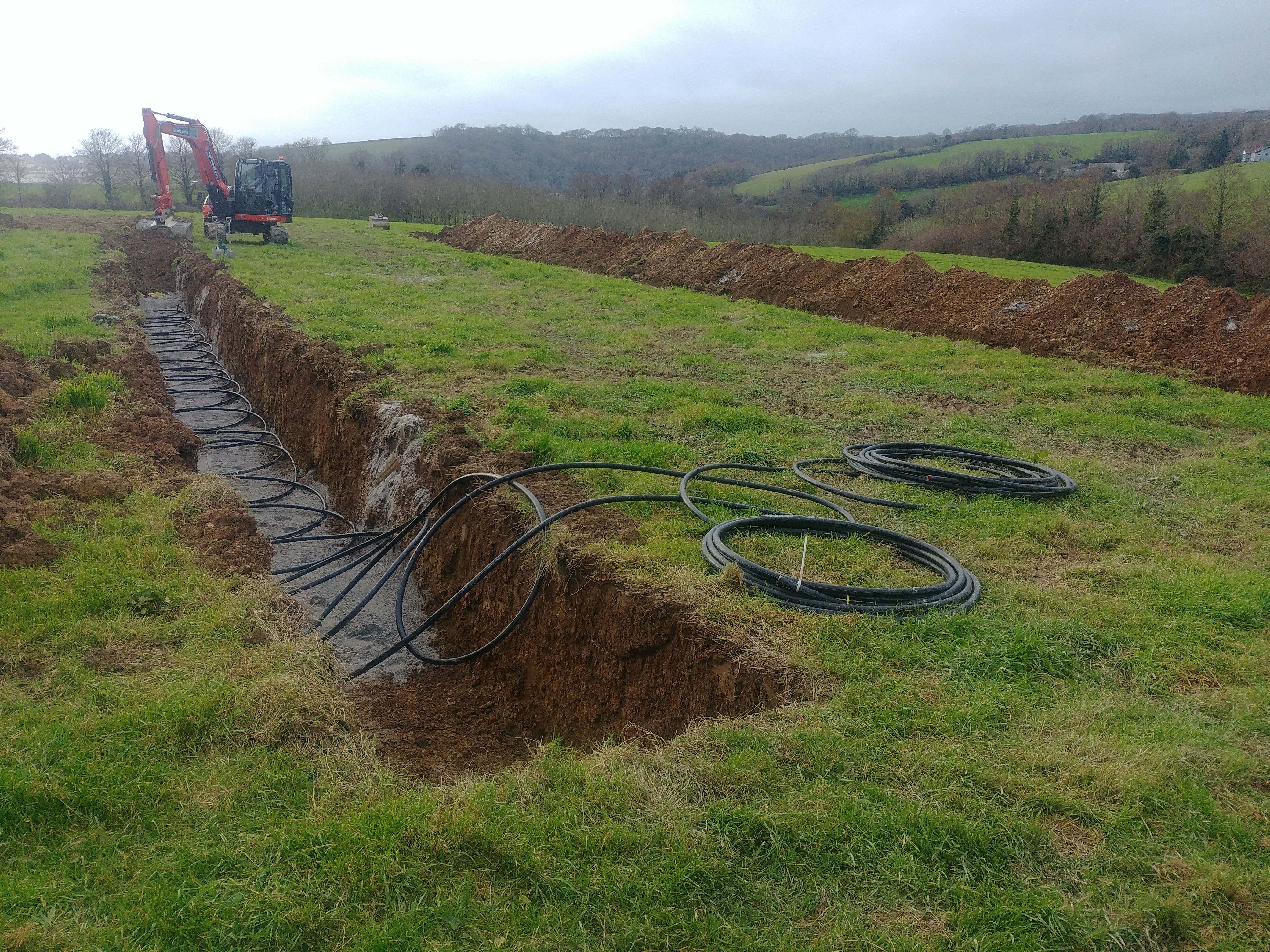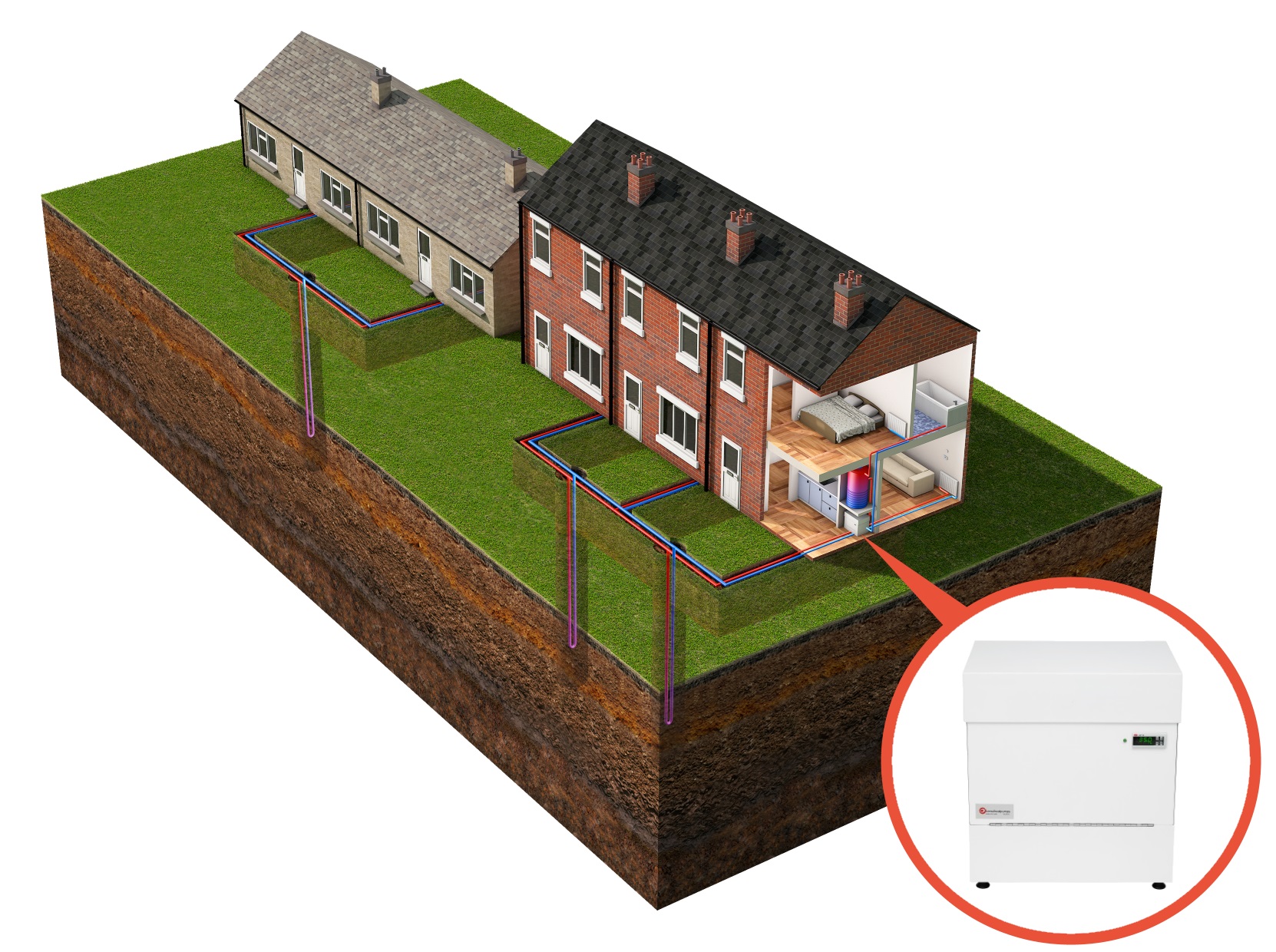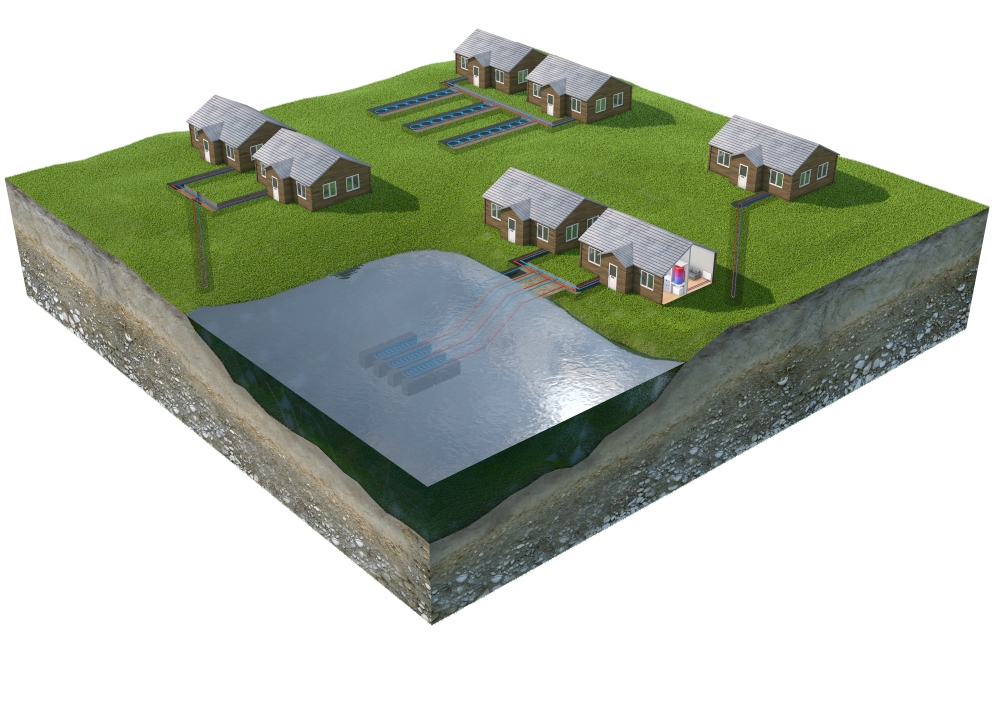RENEWABLE HEATING & ENERGY SPECIALISTS
HEAT PUMPS, SOLAR PV & BATTERY STORAGE SYSTEMS | DOMESTIC & COMMERCIAL
District Heating
What is District Heating
Traditional District heating generates heat at a central location and distributes that heat normally via hot water at high temperatures for space heating and hot water to residential and commercial properties using a network of insulated pipe know as heat main. For example, a block of flats all being supplies by a single large Biomass or Mains gas boiler
District heating plants provide higher levels of efficiency and lower carbon emissions than localised boilers.
In the last few years as heat pumps have becoming an ever-better technology with operating efficiency doubling.
In the UK we are now seeing more and more district heat schemes using Biomass and heat pumps with the movement away from the traditional choices of mains Gas, LPG and Oil and more towards efficient controllable systems teamed with underfloor heating.
The Image to the right show a typical trench for the installation of the collector array. this pipework is normally laid in 50 meter runs sizes at approximately 5kW per run in heat pump sizing. These trenches are 1 meter wide and 1.4 meters deep, spaced at 5 meter centres.
Please note this can change slightly dependent on ground conditions.

Ground Source Heat Pump Micro District Heating
Micro district heating for Ground source heat pump technology is the use of a communal ground array or collector that extracts passive heat from the ground temperature and distributes it to an individual properties heat pump for the provision of both heating and hot water.
One large array shared across many properties can not only maximise use of available space but becomes a much more cost-effective solution for heating several properties when compared to the use of individual arrays or boreholes.
Having a smaller individually sized heat pump in each dwelling ensures each unit can be paying the electric bill for its own use only, this can save the potentially complex breakdown of centralised solutions, it also ensures that each unit is responsible only for its own energy use.
This can provide a radically cheaper solution than providing a high flow temperature centralised hot water district heating system as it avoids the cost of installing a large heavily-insulated pipe network to each of the points of connection, and avoids the risk of heat losses between buildings which can cause issues with RHI registration and payments.
There are several major financial benefits that a micro district ground source system qualifies for:
• Commercial Renewable Heat Incentive (“RHI”) from Government paid over 20 years based on heat used, as opposed to individual houses which only qualify for the 7-year domestic RHI based on deemed usage.
• provide reliable low-cost green heating for spaces and hot water
• save over 60% on carbon emissions on heating compared to emissions from gas boilers
• save 100% on carbon emissions on heating and cooling when the grid is decarbonised
• Provides High efficiency heating (actual figures are dependent on the individual heat pump locating and operating efficiency)


